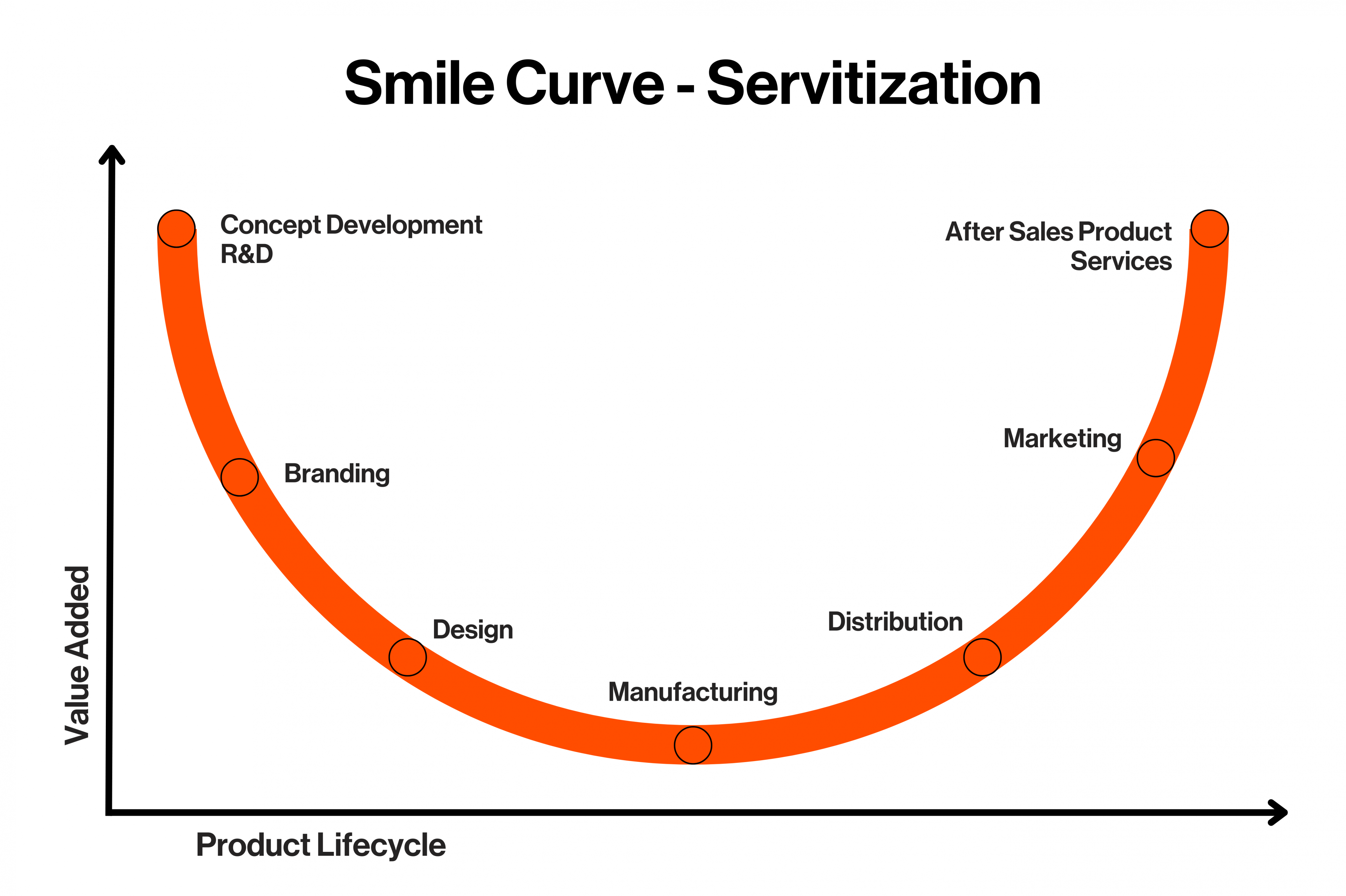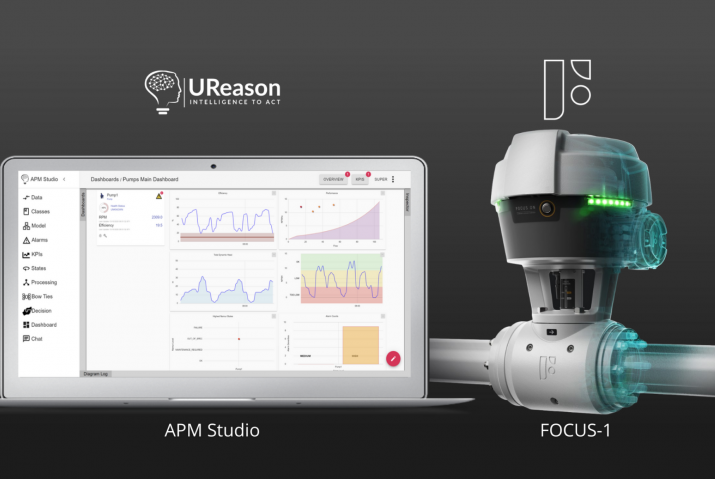In today’s rapidly evolving economy, businesses are increasingly exploring innovative strategies to enhance value creation and maintain competitiveness. One such strategy is servitization, which involves transforming traditional product-based offerings into comprehensive solutions that combine products and services. This approach not only meets evolving customer demands but also aligns with the concept of the smiling curve, a model illustrating value distribution across different stages of a product’s lifecycle.
Understanding the Smiling Curve
The smiling curve is a business concept introduced by Stan Shih, the founder of Acer Inc., in 1992. It graphically represents how value addition varies across the stages of a product’s development and distribution. In this model, the two ends of the value chain—conception (activities like research and development) and marketing (including branding and after-sales services)—command higher value addition compared to the middle part, which is manufacturing. When plotted on a graph with value-added on the Y-axis and stages of production on the X-axis, the curve resembles a smile, indicating higher value at the initial and final stages and lower value in the middle (Wiki).
The Role of Servitization in Enhancing the Smiling Curve
Servitization plays a pivotal role in elevating a company’s position along the smiling curve by shifting focus from low-value manufacturing processes to high-value service-oriented activities. By integrating services such as maintenance, support, and performance monitoring with their products, companies can enhance customer relationships and create distinct competitive advantages.
For instance, companies like Rolls-Royce have implemented servitization by offering “Power by the Hour,” where customers pay for engine hours used rather than purchasing the engines outright. This model provides customers with comprehensive services, including maintenance and support, thereby enhancing value addition at the post-production stage of the value chain.
Advantages of Servitization
The integration of services into product offerings presents several benefits:
- Financial Stability: Services often yield higher profit margins than products alone. For example, General Motors earned more profits in 2001 from $9 billion in after-sale revenues than from $150 billion in car sales (Wiki).
- Strategic Differentiation: Offering unique services makes it challenging for competitors to imitate, providing a sustainable competitive advantage.
- Enhanced Customer Relationships: Long-term service contracts foster deeper customer relationships, leading to increased loyalty and opportunities for upselling.
Challenges in Implementing Servitization
Despite its advantages, servitization also presents challenges:
- Cultural Shift: Transitioning to a service-oriented model requires a significant change in organizational culture and mindset.
- Capability Development: Companies must develop new capabilities in service delivery and management, which may require substantial investment.
- Risk Management: Offering services, especially those tied to product performance, can introduce new risks that need to be managed effectively.
Conclusion
Servitization offers a pathway for companies to move up the smiling curve by focusing on high-value activities at both ends of the value chain. By embracing this approach, businesses can enhance their value proposition, achieve financial stability, and build stronger customer relationships, all of which are crucial in today’s dynamic economic environment.
APM-Studio: Accelerating Digital Servitization
With APM-Studio, you can accelerate you digital servitization strategy and deliver branded asset servitization solutions that run anywhere, all while safeguarding intellectual property. Many OEMs have followed suit, leveraging APM-Studio to transform their products into smart, service-oriented offerings.
If you’re interested in learning how APM-Studio can help co-create and scale your digital solutions, download our e-book, or reach out to discuss potential collaborations!
Learn More About APM Studio
Our product APM Studio is the leading Real-Time Analytics Software for Machines and Processes to make them Smarter.









